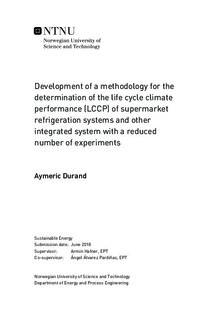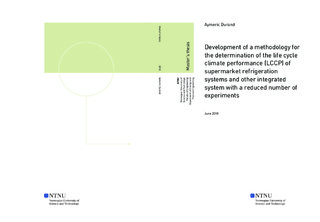| dc.description.abstract | The SuperSmart Rack is an innovative prototype of a refrigeration system running with CO2 as only refrigerant with the aim to reduce the environmental impacts. It is discussed in the present report how to assess these impacts.
It is furtherly seen how to generally proceed to the LCCP (Life Cycle Climate Performance) of a refrigeration system. The LCCP methodology consists in calculating the different terms contributing to worsen the greenhouse effect. The main contribution is depending on the energy consumption of the refrigeration system. It is quite challenging to know the energy consumption of a prototype as if it were running in a real supermarket. In order to deal with it, it is presented an extrapolation methodology on assumptions and approximations and using prototype tests on a few working points.
The energy consumption calculation that is hereby detailed uses the dataset of a refrigeration system running on field at the Rema 1000 supermarket located at Kroppanmarka, Trondheim, Norway -the reference supermarket. This dataset enables a comprehension of the load demands evolution and their dependency with the ambient temperature. The ambient temperature has a great importance in the unit s performances so the location where the prototype wants to be tested matters. The presented methodology helps one to build up a set of working points to test on the prototype, just starting from the weather database of a location.
Three different methods to assess the energy consumption of a prototype are detailed. The MT load is the one changing the most and each method has its own way to determine the MT load. The first method is based on the assumption that the MT (Medium temperature) load is depending on the hour of the day. It is quite accurate, but it leads to too many working points. The second consists in correlating the MT load and the ambient temperature at the location of the reference supermarket so that the accuracy and the number of working points are good but the location of the energy consumption calculation can only be the same as the reference supermarket s. The third is a greater approximation saying that the MT load has only two values opened/closed shop; It gives a small working point set but with a worse accuracy. | |

